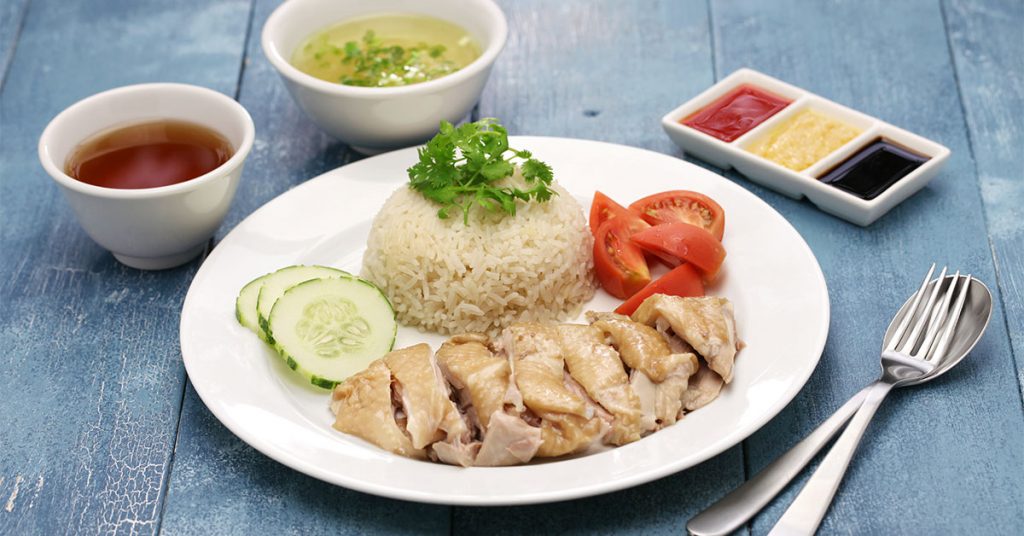Soft, succulent chicken, paired with fragrant rice with cool cucumbers and spicy ginger served at the side and a drizzle of sweet dark sauce…
I don’t even have to say what it is, as it’s one of Singaporeans’ proud local delicacies.
And no, it’s not the McDonald’s chicken burger.

Unfortunately for chicken rice lovers out there, you might now need to prepare yourself to cough up more dollars for that same plate of heavenly goodness.
Fresh Chicken Prices Are Rising
In this COVID-19 pandemic, we’re no stranger to seeing prices slowly start to rise as businesses struggle to stay afloat.
And it seems like chickens won’t be spared, either.
Did you know that Singapore actually gets quite a bulk of our fresh chicken supply from Malaysia?
According to the Singapore Food Agency, Singapore consumes chicken more than any other meat, with the nation consuming close to 36kg per capita in 2020.
More than 30% of Singapore’s chickens are imported from Malaysia and as of late, chicken prices in Malaysia are expected to rise greatly.
While one kilogram of chicken only cost about RM5.50 (about S$1.77) just a few weeks back, it’s expected to balloon to about RM7 to RM8 (about S$2.25 to S$2.60) soon.
Why such a huge rise all of a sudden?
Corn And Soybean Prices Are Going Up
Well, the prices of raw materials used in rearing chickens are rising.
Normally, poultry feed for chickens consists of ingredients like corn and soybean.
Corn and soybean products have now hit an all-time high in prices ever since eight years ago – with corn costing US$149 to US$256 per tonne (about S$199 to S$343) in August.
Soybeans were sold at US$643 per tonne in May 2021, almost double the prices from the same month last year when it was sold at only US$359.
Reasons for the sudden skyrocketing prices include bad weather conditions in places these commodities are grown in, like Brazil and the United States.
Advertisements
Not Easily Replaced
Corn and soybean are easily digested and also have the highest nutritional value needed for the swift growth of chickens, thus they aren’t easily replaceable in poultry feed.
Mr Ong Kian Sun, the Chairman of Singapore’s Poultry Merchants’ Association, told The Straits Times that as the costs for poultry feed increase, there have been farmers in Malaysia refusing to rear as many chickens as before too.
When the supply of chickens gets affected, so will the prices.
As a result of this ripple effect, naturally, the prices of fresh chickens would increase too.
Suppliers And Stall Owners Unable To Absorb Prices
Sadly, the costs are likely to grow too much for suppliers and chicken rice stall owners to continue absorbing by themselves.
Advertisements
The Straits Times reported that several chicken rice sellers have also been considering whether to absorb costs or pass these on to customers.
Malaysia’s COVID-19 situation has also led to transportation and manpower costs there to be on an upward trend, escalating the situation further, suppliers said.
Although some have been looking into frozen chicken options, which are cheaper, it will still be difficult for them to absorb the costs as they will be simply maintaining their bottom line.
As a result, supplier prices may rise about 10%, which is the case for Sinmah Poultry Processing, which commented that their only source of fresh chicken hails from Malaysia.
Toa Payoh chicken rice stall owner Mr Michael Poh, 41, fears that he will have no choice but to increase his prices from $3 a packet to $3.50 soon, saying that it was his “last resort”.
Read Also:
- Fastest Gurkha Runner Accepts Soh Rui Yong’s Challenge To Beat His 2.4km Timing
- Apple Fined S$1,000 For Allegedly Hosting Farewell Party For Employee At Orchard Store
Feature Image: bonchan / Shutterstock.com
Advertisements
Read Also:
- You Can Soon See “Northern Lights” in Gardens by the Bay & It’s Free
- Everything About the Eta Aquarids Meteor Shower That’ll Be in S’pore Sky in May
- S’porean Killed in Spain Had Bought Insurance Policy from Suspect
- Everything About the 15YO Who Lived in a Circuit Road Market Stall
- Walk-Ins for Some Traffic-Related Service in TP Be Discontinued & People Have Book Appointments Instead
- Certain Parts of Telok Blangah Hill Park to be Closed for 2 Years After Slope Failure
Advertisements

